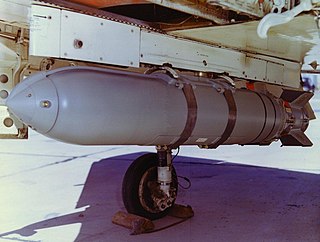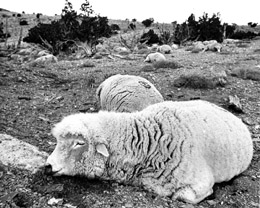
VX is an extremely toxic synthetic chemical compound in the organophosphorus class, specifically, a thiophosphonate. In the class of nerve agents, it was developed for military use in chemical warfare after translation of earlier discoveries of organophosphate toxicity in pesticide research. In recent years, VX was found to be the agent used in the assassination of Kim Jong-nam. In its pure form, VX is an oily, relatively non-volatile liquid that is amber-like in colour. Because of its low volatility, VX persists in environments where it is dispersed.

Porton Down is a science park in Wiltshire, England, just northeast of the village of Porton, near Salisbury. It is home to two British government facilities: a site of the Ministry of Defence's Defence Science and Technology Laboratory (Dstl) – known for over 100 years as one of the UK's most secretive and controversial military research facilities, occupying 7,000 acres (2,800 ha) – and a site of the UK Health Security Agency. It is also home to other private and commercial science organisations, and is expanding to attract other companies.

The United States is known to have possessed three types of weapons of mass destruction: nuclear weapons, chemical weapons, and biological weapons. The U.S. is the only country to have used nuclear weapons on another country, when it detonated two atomic bombs over two Japanese cities of Hiroshima and Nagasaki during World War II. It had secretly developed the earliest form of the atomic weapon during the 1940s under the title "Manhattan Project". The United States pioneered the development of both the nuclear fission and hydrogen bombs. It was the world's first and only nuclear power for four years, from 1945 until 1949, when the Soviet Union produced its own nuclear weapon. The United States has the second-largest number of nuclear weapons in the world, after the Russian Federation.

Dugway Proving Ground (DPG) is a U.S. Army facility established in 1942 to test biological and chemical weapons, located about 85 mi (137 km) southwest of Salt Lake City, Utah, United States, and 13 mi (21 km) south of the 2,624 sq mi (6,800 km2) Utah Test and Training Range.
The Skull Valley Indian Reservation is located in Tooele County, Utah, United States, approximately 45 miles (72 km) southwest of Salt Lake City. It is inhabited by the Skull Valley Band of Goshute Indians of Utah, a federally recognized tribe. As of 2017 the tribe had 134 registered members and 15-20 people living on the reservation.
The United States biological weapons program officially began in spring 1943 on orders from U.S. President Franklin Roosevelt. Research continued following World War II as the U.S. built up a large stockpile of biological agents and weapons. Over the course of its 27-year history, the program weaponized and stockpiled the following seven bio-agents :

Project 112 was a biological and chemical weapon experimentation project conducted by the United States Department of Defense from 1962 to 1973.

Johnston Atoll Chemical Agent Disposal System (JACADS) was the U.S. Army's first chemical munitions disposal facility. It was located on Johnston Island, at Johnston Atoll and completed its mission and ceased operation in 2000.

The M33 cluster bomb, also known as the (M33) Brucella cluster bomb, was a U.S. biological cluster bomb developed in the early 1950s and deployed in 1952. It was the first standardized biological weapon in the U.S. arsenal.

The Deseret Test Center was a U.S. Army operated command in charge for testing chemical and biological weapons during the 1960s. The Deseret was headquartered at Fort Douglas, Utah, a former U.S. Army base.

The Weteye bomb was a U.S. chemical weapon designed for the U.S. Navy and meant to deliver the nerve agent sarin. The Weteye held 160 kg (350 lb) of liquid sarin and was officially known as the Mk 116. Stockpiles of Weteyes were transferred to Utah in the 1980s amidst controversy and protest.

Operation Big Itch was a U.S. entomological warfare field test using uninfected fleas to determine their coverage and survivability as a vector for biological agents. The tests were conducted at Dugway Proving Ground in 1954.
The E14 munition was a cardboard sub-munition developed by the United States biological weapons program as an anti-crop weapon. In a series of field tests in 1955, the E14 was loaded with fleas and air-dropped.

The MC-1 bomb was the first U.S. non-clustered air-dropped chemical munition. The 750-pound (340 kg) MC-1 was first produced in 1959 and carried the nerve agent sarin.
The Granite Peak Installation (GPI) — also known as Granite Peak Range — was a U.S. biological weapons testing facility located on 250 square miles (650 km2) of Dugway Proving Ground in Utah. The GPI was a sub-installation of Dugway but had its own facilities, including utilities. Established in 1943, GPI was deactivated with the end of World War II.
The United States biological defense program—in recent years also called the National Biodefense Strategy—refers to the collective effort by all levels of government, along with private enterprise and other stakeholders, in the United States to carry out biodefense activities.
The United States chemical weapons program began in 1917 during World War I with the creation of the U.S. Army's Gas Service Section and ended 73 years later in 1990 with the country's practical adoption of the Chemical Weapons Convention. Destruction of stockpiled chemical weapons began in 1985 and is still ongoing. The U.S. Army Medical Research Institute of Chemical Defense (USAMRICD), at Aberdeen Proving Ground, Maryland, continues to operate.










